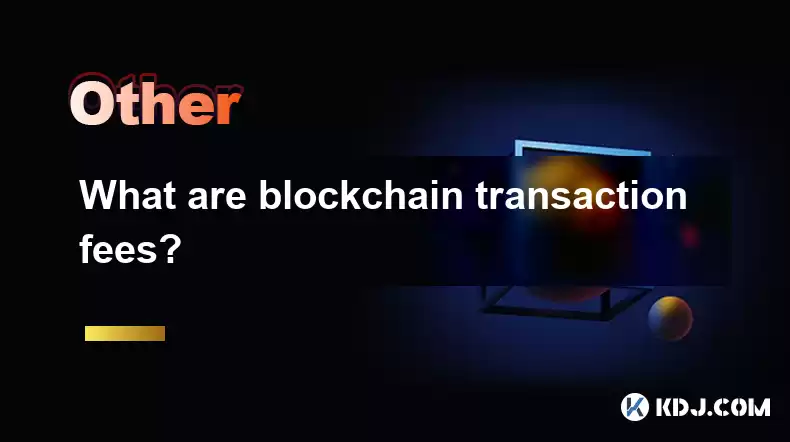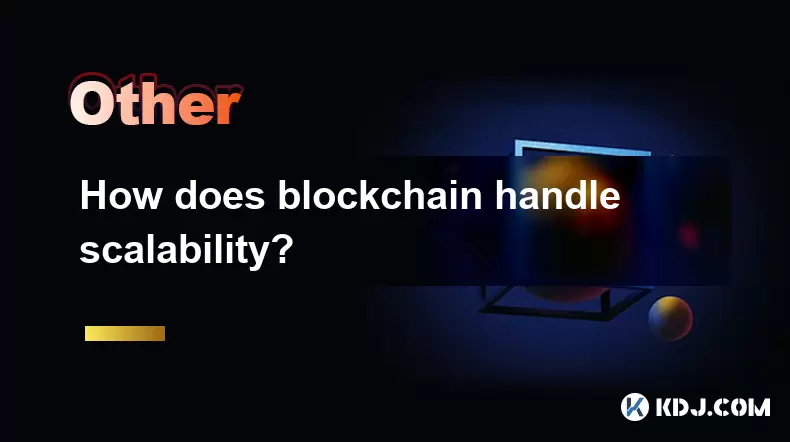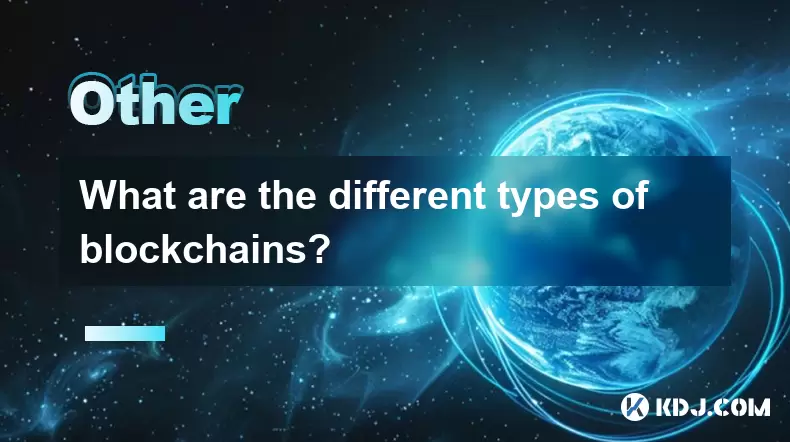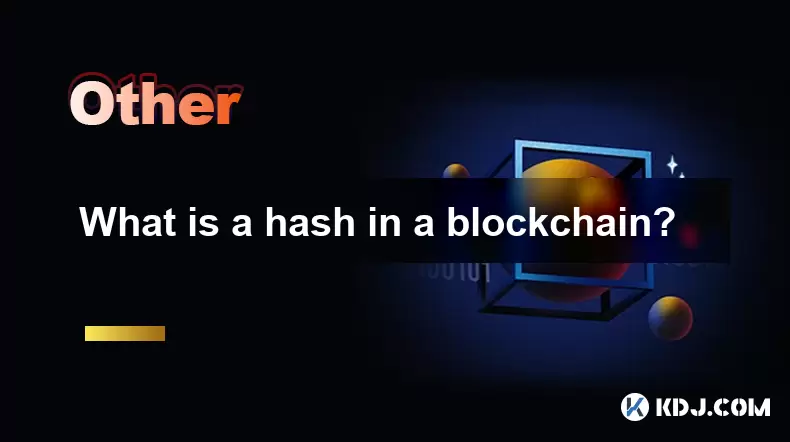-
 Bitcoin
Bitcoin $112400
-1.07% -
 Ethereum
Ethereum $3409
-3.27% -
 XRP
XRP $2.784
-6.60% -
 Tether USDt
Tether USDt $0.9997
-0.03% -
 BNB
BNB $739.3
-2.09% -
 Solana
Solana $158.0
-2.90% -
 USDC
USDC $0.9998
-0.02% -
 TRON
TRON $0.3213
-0.94% -
 Dogecoin
Dogecoin $0.1929
-5.01% -
 Cardano
Cardano $0.6974
-2.82% -
 Hyperliquid
Hyperliquid $36.69
-2.31% -
 Sui
Sui $3.327
-4.80% -
 Stellar
Stellar $0.3672
-5.18% -
 Chainlink
Chainlink $15.65
-3.07% -
 Bitcoin Cash
Bitcoin Cash $525.0
-1.68% -
 Hedera
Hedera $0.2291
-6.00% -
 Avalanche
Avalanche $20.91
-2.96% -
 Ethena USDe
Ethena USDe $1.000
0.00% -
 Toncoin
Toncoin $3.520
-1.12% -
 UNUS SED LEO
UNUS SED LEO $8.968
0.14% -
 Litecoin
Litecoin $105.7
0.26% -
 Shiba Inu
Shiba Inu $0.00001181
-1.79% -
 Polkadot
Polkadot $3.492
-2.08% -
 Uniswap
Uniswap $8.800
-3.10% -
 Dai
Dai $0.9999
-0.01% -
 Monero
Monero $289.9
-3.17% -
 Bitget Token
Bitget Token $4.243
-1.27% -
 Pepe
Pepe $0.00001006
-3.67% -
 Cronos
Cronos $0.1248
-5.68% -
 Aave
Aave $249.7
-2.50%
What are blockchain transaction fees?
Blockchain transaction fees, paid to miners for verifying transactions, are influenced by network congestion, transaction size, and factors such as block size and mining difficulty.
Feb 15, 2025 at 02:12 pm

Key Points:
- What are blockchain transaction fees?
- How are blockchain transaction fees determined?
- What factors affect blockchain transaction fees?
- How to calculate blockchain transaction fees
- How to minimize blockchain transaction fees
What are blockchain transaction fees?
Blockchain transaction fees are payments made to cryptocurrency miners or validators for processing and verifying transactions on a blockchain network. These fees are used to incentivize miners to add new blocks to the blockchain, which helps to secure the network and maintain its integrity.
Transaction fees can vary depending on the blockchain network and the current demand for block space. Networks with high demand, such as Bitcoin and Ethereum, generally have higher transaction fees.
How are blockchain transaction fees determined?
Blockchain transaction fees are typically determined by two factors:
- Network congestion: When the network is congested, there is more demand for block space, which drives up transaction fees. Miners or validators are more likely to prioritize transactions with higher fees, so users who want their transactions processed quickly may need to pay higher fees.
- Transaction size: The size of a transaction also affects the fee. Larger transactions, such as those involving large amounts of cryptocurrency or complex smart contracts, require more computational resources to process and verify, so they typically incur higher fees.
What factors affect blockchain transaction fees?
Several factors can affect blockchain transaction fees, including:
- Network activity: The level of activity on the network can impact transaction fees. When there is a lot of activity, such as during periods of high trading volume, transaction fees tend to be higher.
- Block size: The block size, which is the maximum amount of data that can be included in a single block, affects transaction fees. Smaller block sizes limit the number of transactions that can be processed per block, which can lead to higher fees.
- Mining difficulty: The difficulty of mining a block, which is determined by the algorithm used by the blockchain network, affects transaction fees. Higher mining difficulty means that miners have to work harder to find new blocks, which can lead to higher fees.
How to calculate blockchain transaction fees
Calculating blockchain transaction fees can be complex, as they are determined by multiple factors. However, some resources and tools can help estimate transaction fees:
- Online fee calculators: Several websites and platforms offer fee calculators that allow users to estimate transaction fees based on current network conditions and transaction size.
- Wallet software: Some cryptocurrency wallets have built-in features that automatically calculate and display transaction fees based on user-selected parameters.
- Blockchain explorers: Blockchain explorers provide real-time data on network congestion and transaction fees. Users can use these explorers to estimate fees based on historical data and current network conditions.
How to minimize blockchain transaction fees
There are a few strategies users can employ to minimize blockchain transaction fees:
- Use off-peak hours: When network activity is low, such as during late night or early morning hours, transaction fees tend to be lower.
- Batch transactions: If possible, combine multiple transactions into a single batch. This can reduce the overall transaction fees compared to sending each transaction separately.
- Use a different blockchain: Consider using a blockchain network with lower transaction fees. While Bitcoin and Ethereum are popular choices, there are many other blockchain networks that offer faster and cheaper transactions.
- Use a cryptocurrency exchange: Some cryptocurrency exchanges offer lower transaction fees for their users. This can be a convenient option for users who regularly trade cryptocurrencies.
FAQs:
Q: What determines the amount of blockchain transaction fees?
A: Transaction fees are determined by a combination of factors, including network congestion, transaction size, block size, mining difficulty, and other market conditions.
Q: Why do blockchain transaction fees vary?
A: Transaction fees vary depending on the demand for block space and the resources required to process and verify a transaction. When there is high demand for block space, transaction fees tend to be higher.
Q: How can I estimate the transaction fee for my transaction?
A: You can use online fee calculators, wallet software, or blockchain explorers to estimate transaction fees based on current network conditions and transaction size.
Q: How can I pay blockchain transaction fees?
A: Blockchain transaction fees are typically paid in the cryptocurrency of the specific blockchain network. For example, on the Bitcoin network, transaction fees are paid in Bitcoin (BTC).
Q: Can I avoid paying blockchain transaction fees?
A: While it is not always possible to completely avoid transaction fees, there are strategies to minimize them, such as using off-peak hours, batching transactions, or using alternative blockchain networks.
Disclaimer:info@kdj.com
The information provided is not trading advice. kdj.com does not assume any responsibility for any investments made based on the information provided in this article. Cryptocurrencies are highly volatile and it is highly recommended that you invest with caution after thorough research!
If you believe that the content used on this website infringes your copyright, please contact us immediately (info@kdj.com) and we will delete it promptly.
- Ruvi AI: The Millionaire Maker with a Price Spike on the Horizon?
- 2025-08-03 02:50:12
- DOGE, Utility Coins, and Smart Money: A New Era for Crypto Investing?
- 2025-08-03 02:50:12
- Punisher Coin: Is This Meme Coin the Crypto Investment with 100x ROI Potential?
- 2025-08-03 03:30:12
- Ruvi AI, XRP, and CoinMarketCap: Decoding the Crypto Buzz
- 2025-08-03 03:30:12
- Solana, WeWake, and Presales: What's Hot in the Crypto Space?
- 2025-08-03 03:35:25
- MoonBull, LOFI Pepe: Navigating the Meme Coin Mania and the Best Crypto Whitelist
- 2025-08-03 04:10:12
Related knowledge

What is the difference between on-chain and off-chain transactions?
Aug 02,2025 at 04:22pm
Understanding On-Chain TransactionsOn-chain transactions refer to digital asset transfers that are recorded directly on a blockchain ledger. These tra...

What is the double-spending problem and how does blockchain prevent it?
Aug 02,2025 at 01:07pm
Understanding the Double-Spending ProblemThe double-spending problem is a fundamental challenge in digital currency systems where the same digital tok...

What is the difference between a blockchain and a database?
Aug 01,2025 at 09:36pm
Understanding the Core Structure of a BlockchainA blockchain is a decentralized digital ledger that records data in a series of immutable blocks linke...

How does blockchain handle scalability?
Aug 02,2025 at 02:58pm
Understanding Blockchain Scalability ChallengesBlockchain scalability refers to a network's ability to handle an increasing volume of transactions wit...

What are the different types of blockchains?
Aug 03,2025 at 03:01am
Public Blockchains: Open and Decentralized NetworksPublic blockchains are the most widely recognized type of blockchain, characterized by their open a...

What is a hash in a blockchain?
Aug 02,2025 at 05:28am
Understanding the Concept of Hash in BlockchainA hash in the context of blockchain technology refers to a unique digital fingerprint generated by a cr...

What is the difference between on-chain and off-chain transactions?
Aug 02,2025 at 04:22pm
Understanding On-Chain TransactionsOn-chain transactions refer to digital asset transfers that are recorded directly on a blockchain ledger. These tra...

What is the double-spending problem and how does blockchain prevent it?
Aug 02,2025 at 01:07pm
Understanding the Double-Spending ProblemThe double-spending problem is a fundamental challenge in digital currency systems where the same digital tok...

What is the difference between a blockchain and a database?
Aug 01,2025 at 09:36pm
Understanding the Core Structure of a BlockchainA blockchain is a decentralized digital ledger that records data in a series of immutable blocks linke...

How does blockchain handle scalability?
Aug 02,2025 at 02:58pm
Understanding Blockchain Scalability ChallengesBlockchain scalability refers to a network's ability to handle an increasing volume of transactions wit...

What are the different types of blockchains?
Aug 03,2025 at 03:01am
Public Blockchains: Open and Decentralized NetworksPublic blockchains are the most widely recognized type of blockchain, characterized by their open a...

What is a hash in a blockchain?
Aug 02,2025 at 05:28am
Understanding the Concept of Hash in BlockchainA hash in the context of blockchain technology refers to a unique digital fingerprint generated by a cr...
See all articles

























































































